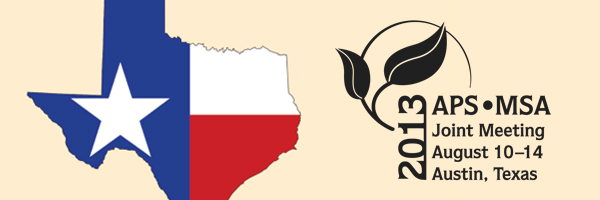APS Homepage
Back

Poster Session: Bacteriology
© 2013 by The American
Phytopathological Society. All rights reserved.
8-P
Classification of Rathayibacter agropyri sp. nov. based on analysis of the 16S rRNA and housekeeping genes.
S. J. MAUZEY (1), B. K. Schroeder (1), T. D. Murray (1)
(1) Washington State University, Pullman, WA, U.S.A.
Bacteria in the genus Rathayibacter can survive in dried ooze on infected seed heads of grass hosts for years. In 1982, a Gram-positive yellow-pigmented bacterium was isolated from ooze present on 30-to 40-year-old plant samples from the Washington State University Mycological Herbarium. A similar bacterium was isolated from fresh plant samples collected in Montana in 1986. In 2011, viable bacteria were again isolated from these samples. Morphological and physiological tests completed on the isolates in the 1980s and in 2011 confirmed that they were identical. Based on the morphological and physiological data, the isolates were hypothesized to represent a new species in the genus Rathayibacter. The 16S rRNA gene and four housekeeping genes (rpoB, gyrB, recA, and ppk) were amplified and sequenced from the isolates. PAUP* analysis of the 16S rRNA sequences indicate that the isolates are identical to each other and form a clade distinct from the six known Rathayibacter species. PAUP* analysis of the sequences obtained from the housekeeping genes rpoB, recA, and gyrB also demonstrate that the isolates form a clade distinct from the six Rathayibacter species. Analysis for congruence between the housekeeping genes is in progress and sequences from congruent trees will be used in an analysis of the concatemer of all four housekeeping genes. These data support the hypothesis that these isolates are a new species of Rathayibacter, which we propose to be named R. agropyri.